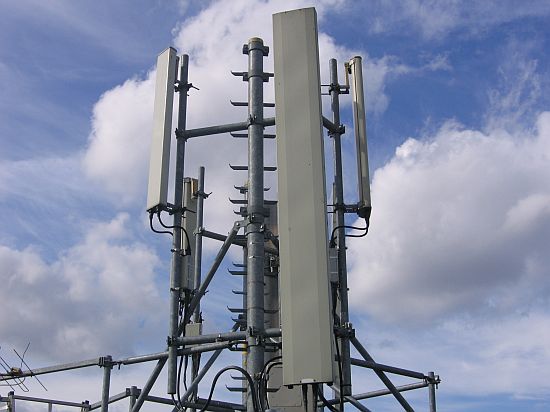Our super-fast wireless phone networks rely on a system of base stations or cell sites, which help relay information to and from your mobile device. These are usually located in a position as high as possible to provide adequate coverage for a region, and come in a variety of different shapes and sizes. Macrocells are the largest, typically covering rural areas, while microcells are lower in power and cover suburban or urban areas. There are even smaller cells than these, which can be located inside of buildings. A single service provider may use a combination of these different types of base stations to handle high demand in a given area, depending on factors like population density and natural or manmade structures that can block signals.
Image Source: Pixabay
Base Station Energy Consumption
A typical 3G mobile network can use thousands of base stations. With such a high global demand for mobile network coverage, mobile base stations can use a great deal of power overall. At the moment, researchers around the world are hard at work on figuring out ways to reduce their energy consumption, whether it’s through renewable sources of energy or changes to the way we manage network traffic. A radio base station can contribute to a country’s overall CO2 emissions, eating up energy at the same time, particularly if it’s diesel powered. For example, Vodafone uses one million litres of diesel each day to power its base stations. With traffic growing exponentially, how do we fight this trend?
Small Cells vs. Large Cells
One way to cut energy consumption is with the introduction of smaller base stations or femtocells. These microcells cover a smaller range, but they also use less power. While it takes many small cells to reach the same level of coverage as a single macrocell, they still consume less energy if they’re only used as needed. Home and business owners can install their own lower power base stations, switching them off when they’re not actively in use. This reduces energy consumption and providing clearer reception at the same time.
Sustainable Energy Sources
Many network providers, including Nokia Networks, are looking at forms of renewable energy as a way to power base stations. Solar and wind energy can be power sources for greener mobile towers, as are hybrid renewable and diesel power generators. Lithium ion batteries can be used to provide more usable energy and a much longer cycle life. These strategies are particularly useful in developing economies or rural areas off the grid. Rather than use diesel generators to power the base stations, operators can use renewable sources to cut costs and carbon emissions.
A Greener Base Station
Over time, radio base stations are becoming increasingly efficient. The use of smaller cells by consumers can help reduce the demand on larger base stations, managing energy flow at the same time. Sustainable energy sources like solar and wind energy are another option to keep up with the energy demand of base stations. The next generation of LTE-standard networks will require and even more advanced strategy, using coordinated signalling to reduce overall consumption.
Article Submitted By Community Writer

